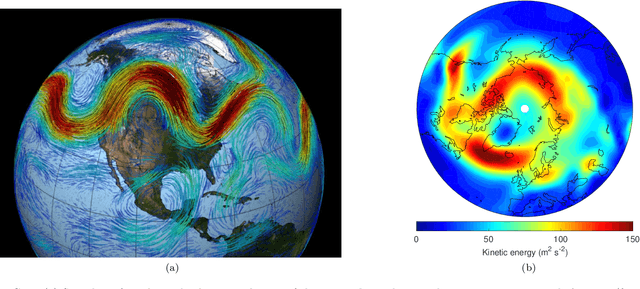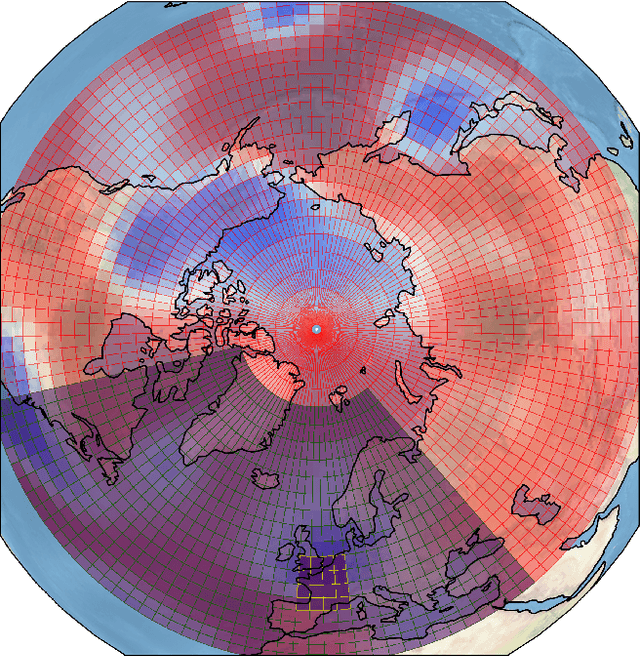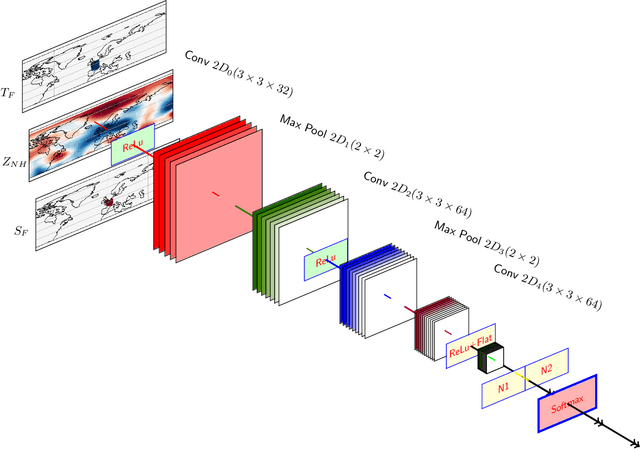George Miloshevich
Extreme heatwave sampling and prediction with analog Markov chain and comparisons with deep learning
Jul 18, 2023Abstract:We present a data-driven emulator, stochastic weather generator (SWG), suitable for estimating probabilities of prolonged heatwaves in France and Scandinavia. This emulator is based on the method of analogs of circulation to which we add temperature and soil moisture as predictor fields. We train the emulator on an intermediate complexity climate model run and show that it is capable of predicting conditional probabilities (forecasting) of heatwaves out of sample. Special attention is payed that this prediction is evaluated using proper score appropriate for rare events. To accelerate the computation of analogs dimensionality reduction techniques are applied and the performance is evaluated. The probabilistic prediction achieved with SWG is compared with the one achieved with Convolutional Neural Network (CNN). With the availability of hundreds of years of training data CNNs perform better at the task of probabilistic prediction. In addition, we show that the SWG emulator trained on 80 years of data is capable of estimating extreme return times of order of thousands of years for heatwaves longer than several days more precisely than the fit based on generalised extreme value distribution. Finally, the quality of its synthetic extreme teleconnection patterns obtained with stochastic weather generator is studied. We showcase two examples of such synthetic teleconnection patterns for heatwaves in France and Scandinavia that compare favorably to the very long climate model control run.
Probabilistic forecasts of extreme heatwaves using convolutional neural networks in a regime of lack of data
Aug 01, 2022



Abstract:Understanding extreme events and their probability is key for the study of climate change impacts, risk assessment, adaptation, and the protection of living beings. In this work we develop a methodology to build forecasting models for extreme heatwaves. These models are based on convolutional neural networks, trained on extremely long 8,000-year climate model outputs. Because the relation between extreme events is intrinsically probabilistic, we emphasise probabilistic forecast and validation. We demonstrate that deep neural networks are suitable for this purpose for long lasting 14-day heatwaves over France, up to 15 days ahead of time for fast dynamical drivers (500 hPa geopotential height fields), and also at much longer lead times for slow physical drivers (soil moisture). The method is easily implemented and versatile. We find that the deep neural network selects extreme heatwaves associated with a North-Hemisphere wavenumber-3 pattern. We find that the 2 meter temperature field does not contain any new useful statistical information for heatwave forecast, when added to the 500 hPa geopotential height and soil moisture fields. The main scientific message is that training deep neural networks for predicting extreme heatwaves occurs in a regime of drastic lack of data. We suggest that this is likely the case for most other applications to large scale atmosphere and climate phenomena. We discuss perspectives for dealing with the lack of data regime, for instance rare event simulations, and how transfer learning may play a role in this latter task.
 Add to Chrome
Add to Chrome Add to Firefox
Add to Firefox Add to Edge
Add to Edge